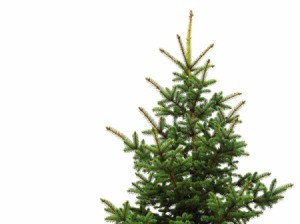
 Not everyone likes the idea of sacrificing a living tree for the sake of celebrating a holiday, but it doesn't change the fact that trees harvested for the Christmas tree industry are a renewable and sustainable resource. In an effort to dispel some of the biggest and most long standing misconceptions consumers have about Christmas trees, The National Christmas Tree Association recently launched what is calls the "Great De-Myth-ification Campaign." Here are four "green" facts about Christmas trees they want you to know.
Not everyone likes the idea of sacrificing a living tree for the sake of celebrating a holiday, but it doesn't change the fact that trees harvested for the Christmas tree industry are a renewable and sustainable resource. In an effort to dispel some of the biggest and most long standing misconceptions consumers have about Christmas trees, The National Christmas Tree Association recently launched what is calls the "Great De-Myth-ification Campaign." Here are four "green" facts about Christmas trees they want you to know.
This may have been the case at one time, but not anymore. The vast majority of real Christmas trees come from tree farms. What's the exception? The Bureau of Land Management and the U.S. Forest Service issue a limited number of "Cut Your Own" permits each year in National forests throughout the United States. Of the 30-35 million real Christmas trees sold in the U.S. each year, the number of trees not grown on tree farms amounts to only a few thousand.
There are 21,000 Christmas tree growers in the United States. Trees are an agricultural crop in an industry that provides jobs for more than 100,000 people. For the 30-35 million harvested and sold each year, 40-45 million new Christmas trees are planted.
Manufacturing a fake Christmas tree uses far more natural resources than are needed to produce a living tree. In fact, eighty-five percent of fake trees are manufactured in and shipped to the United States from China. They are made from plastics, PVC, metals and contain petroleum by-products (non-renewable resources). On the flip side, live trees are grown and shipped within the United States (often locally), they are a renewable resource, and they produce oxygen, remove carbon dioxide from the air and provide a home for wildlife while they grow.
Christmas trees are 100% biodegradable, and according to the University of Iowa, ninety-three percent of real Christmas tree consumers recycle their tree in community recycling programs, or use them in their garden or backyards for mulch, compost, or winter protection. Recycled trees have been used to make sand and soil erosion barriers and placed in ponds for fish shelter. Fake trees are used an average of 6 to 9 years before ending up in a landfill. Unlike real trees, they do not biodegrade, they cannot be recycled, and they last for centuries in a landfill.